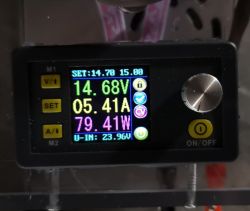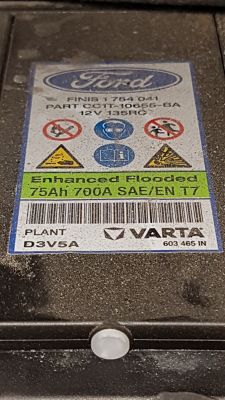Yesterday I finished assembling the power supply. Today I started charging the factory EFB Varta 74ah 700A, this battery suffers from never recharging, or is already a dead man - thanks to the "smart charging" system in the Ford Kuga 2014.
Usually after the night it has a voltage of around 11.9-12V (today 11.98V before charging), no matter how much you drive.
I set the voltage as you wrote, but I have no influence on the CC / CV mode, it seems to me that the DPS5020 selects it and changes it while charging, is that good?
1 phase (14.7V, 15A, CV mode)
- The first 30 mins of charge and the amps quickly dropped to around 5.
- After 1h 1.5A.
- After 2h 1A
2 phase (16V, 3A, CC mode)
- In 10 minutes it dropped to 2.4A, the mode itself changed to CV, amps slightly increased to 2.6.
- After 1h it dropped to 2A.
- After 4 hours, I turned off at 1.5A
3 phase - (13.2V, 0.1A, CV mode)
- I turned on after 1h, the output showed 0.10A, the mode changed to CC.
In the morning it will update the voltage on the battery.










